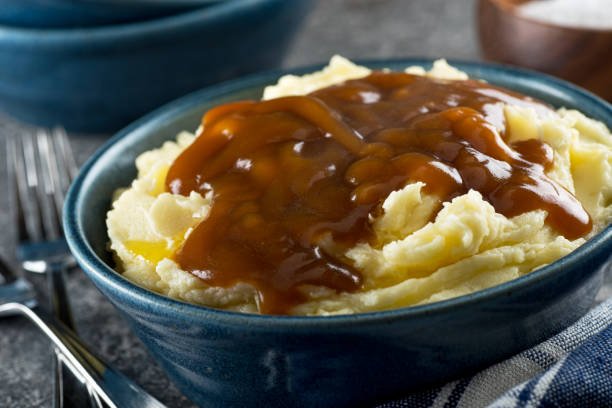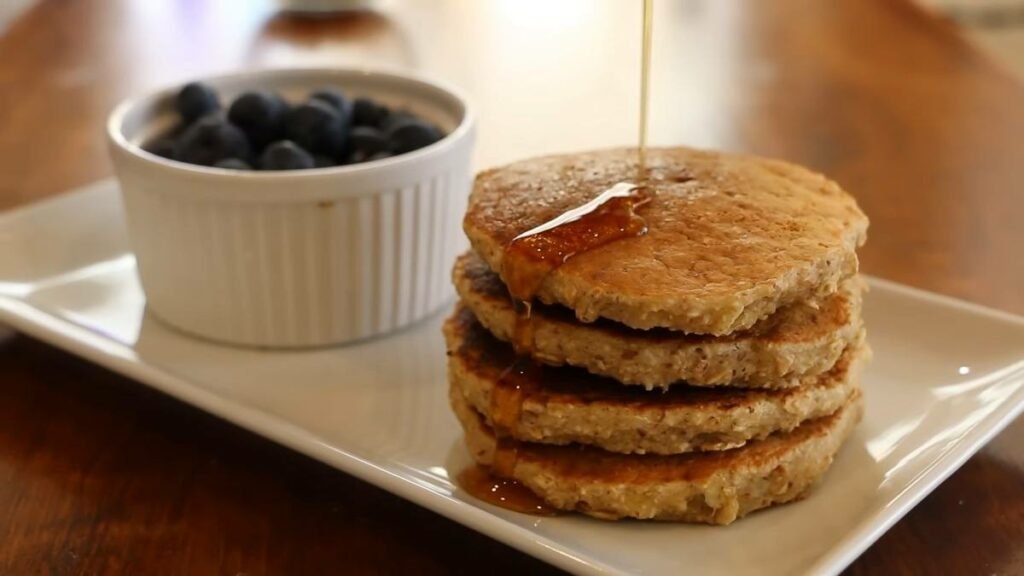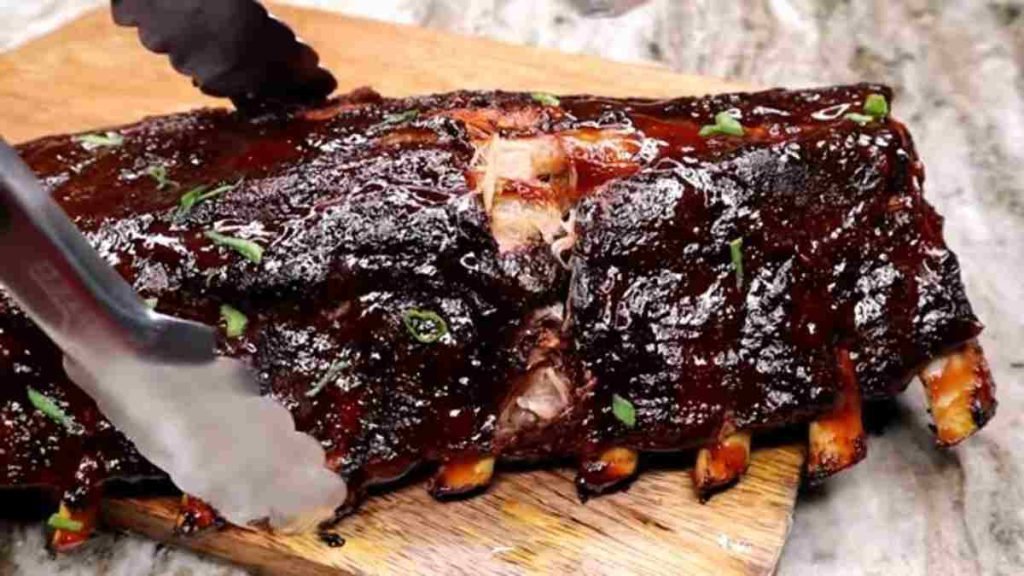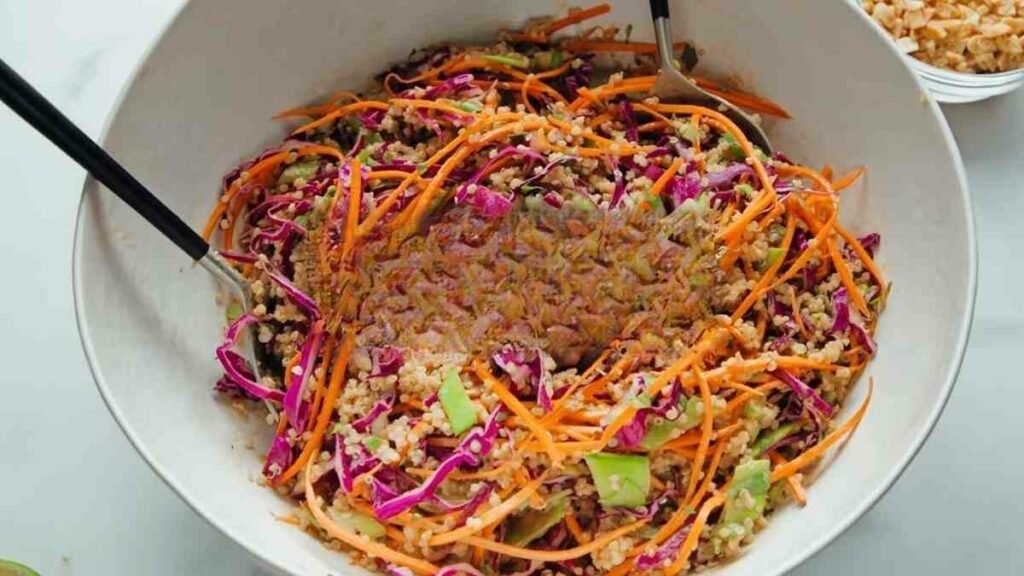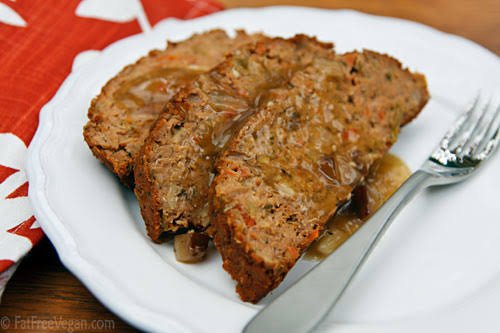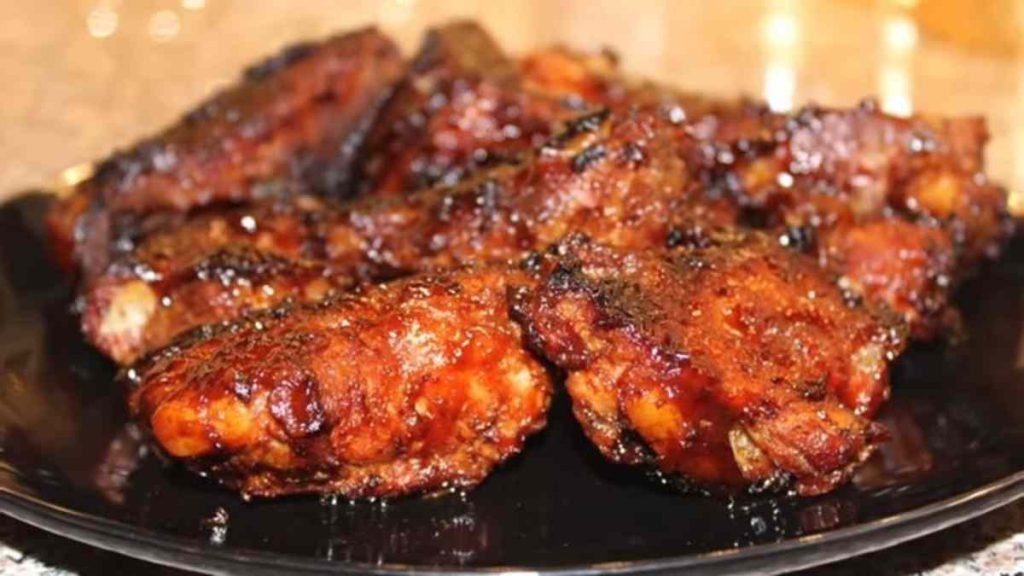Octopus has been a part of human cooking traditions for centuries, with its consumption dating back to ancient times. In Mediterranean cultures, especially in Greece, Spain, and Portugal, the octopus has long been cherished as a delicacy. The Greeks were among the first to embrace octopus as a culinary treasure, utilizing various cooking techniques to enhance its flavour and texture. Over time, octopus recipes have evolved, blending influences from different cultures and regions, resulting in a diverse array of preparations that showcase the versatility of this remarkable seafood.
When it comes to flavour, the octopus is truly one of a kind. Its meat possesses a delicate sweetness with a hint of oceanic brininess. The texture is where the octopus truly shines, as it can range from tender and succulent to slightly chewy, depending on the cooking method employed.
Ingredients For Octopus Recipe
List of the main ingredients commonly used for cooking the octopus recipe:
- Octopus: The star of the dish, usually fresh or frozen. The size of the octopus will determine the cooking time and the number of servings.
- Salt: Used for cleaning and tenderizing the octopus, as well as seasoning the dish.
- Olive Oil: A staple in Mediterranean cuisine, olive oil adds richness and flavour to the octopus.
- Garlic: Fresh garlic cloves or minced garlic provide a fragrant and aromatic element to the dish.
- Lemon: Freshly squeezed lemon juice or lemon zest adds a vibrant citrus flavour that complements the octopus.
- Herbs: Popular choices include bay leaves, thyme, oregano, parsley, or cilantro. They infuse the octopus with aromatic notes.
- Spices: Depending on the recipe, you may use spices such as paprika, black pepper, red pepper flakes, or cayenne pepper to add a hint of heat and complexity.
- Vegetables: Optional vegetables like onions, carrots, and celery can be added for additional flavour and to enhance the overall presentation.
- Wine: Dry white wine, such as Sauvignon Blanc or Pinot Grigio, can be used to deglaze the octopus and add a subtle acidity.
- Vinegar: Some recipes call for a splash of vinegar, such as red wine vinegar or balsamic vinegar, to balance the flavours.
- Broth or Water: This is used to braise or simmer the octopus, infusing it with moisture and flavour.
- Additional Seasonings: Depending on your taste preferences, you may add other seasonings such as soy sauce, Worcestershire sauce, or fish sauce to enhance the umami flavour.
- Garnishes: Fresh herbs, lemon wedges, or a drizzle of olive oil can be used to garnish the cooked octopus for a visually appealing presentation.
Step-by-Step Guide For Octopus Recipe Cooking Direction
Step-by-step cooking guide for preparing octopus:
Step 1: Cleaning and Tenderizing the Octopus
- Start by rinsing the octopus under cold running water to remove any residual debris.
- Remove the head and beak (mouth) of the octopus if they are still intact.
- To tenderize the octopus, you have a few options:
- You can gently pound the tentacles with a meat tenderizer or a rolling pin. This helps break down the connective tissues and makes the octopus more tender.
- Another traditional method is to freeze the octopus overnight and then thaw it. The freezing process helps to break down the fibres and improve tenderness.
Step 2: Preparing the Cooking Liquid
- Fill a large pot with water, enough to fully submerge the octopus. You can also add aromatic ingredients like bay leaves, garlic cloves, and a splash of white wine or vinegar to enhance the flavours.
- Bring the water to a boil over high heat.
Step 3: Cooking the Octopus
- Once the water is boiling, carefully lower the octopus into the pot.
- Reduce the heat to low and let the octopus simmer gently. The cooking time will depend on the size and tenderness of the octopus. As a general guideline, small octopuses may take around 30-45 minutes, while larger ones may take 1-2 hours.
- To check for doneness, use a fork or a knife to pierce the thickest part of the tentacle. If it goes through smoothly with little resistance, the octopus is cooked. If it still feels tough, continue cooking for a little longer.
Step 4: Cooling and Preparing for Seasoning
- Once the octopus is cooked, remove it from the pot and transfer it to a large bowl filled with ice water. This stops the cooking process and helps to maintain a vibrant colour.
- Allow the octopus to cool in the ice water for about 10-15 minutes.
Step 5: Seasoning and Flavoring the Octopus
- Drain the cooled octopus and pat it dry with paper towels.
- At this point, you can cut the octopus into smaller, more manageable pieces or leave it whole, depending on your preference.
- Drizzle the octopus with olive oil to enhance the flavour and prevent it from sticking to the grill or pan.
- Season the octopus generously with salt, pepper, and any desired spices or herbs. This is the perfect opportunity to add your personal touch to the dish.
Step 6: Grilling, Pan-Searing, or Roasting the Octopus
- There are multiple ways to cook the seasoned octopus, including grilling, pan-searing, or roasting:
- Grilling: Preheat a grill to medium-high heat and lightly oil the grates. Grill the octopus for about 3-4 minutes per side until it develops charred marks and is heated through.
- Pan-Searing: Heat a skillet over medium-high heat and add a small amount of oil. Place the octopus in the skillet and cook for about 2-3 minutes per side until it turns golden brown.
- Roasting: Preheat the oven to a high temperature, around 425°F (220°C). Place the seasoned octopus on a baking sheet and roast for approximately 15-20 minutes until it becomes tender and slightly crispy.
Step 7: Resting and Serving
- Once the octopus is cooked to your desired texture, remove it from the heat and let it rest for a few minutes. This allows the juices to be redistributed within the meat.
- Slice the octopus into serving portions and arrange it on a platter.
- Drizzle with some olive oil and a squeeze of fresh lemon juice for an added burst of flavour.
- Garnish with herbs, lemon wedges, or any desired accompaniments.
- Serve the octopus immediately and enjoy it as a standalone dish or as part of a larger seafood feast.
Equipment For Preparing Octopus Recipe
Essential equipment required for preparing octopus include:
- Large Pot: A large, sturdy pot is necessary for boiling the octopus. Choose a pot that can comfortably accommodate the size of the octopus you’re cooking.
- Colander: A colander or strainer is needed to drain the cooked octopus after boiling or blanching.
- Knife: A sharp knife is essential for cleaning and preparing the octopus. A chef’s knife or a boning knife works well for this task.
- Cutting Board: A cutting board provides a safe and stable surface for cleaning and cutting the octopus.
- Tongs: Tongs are useful for handling the octopus during boiling or transferring it from the pot to a colander.
- Grill or Skillet: Depending on the cooking method, you will need either a grill or a skillet. A charcoal or gas grill is perfect for grilling octopus, while a stovetop skillet or a grill pan works well for searing or pan-frying.
- Basting Brush: If grilling or roasting, a basting brush comes in handy for brushing the octopus with marinade or oil.
- Oven (optional): If you choose to roast the octopus, an oven will be required. Preheat the oven to the appropriate temperature specified in the recipe.
- Baking Dish (optional): If the octopus is being baked as part of a dish, a baking dish may be needed to hold the other ingredients and the octopus.
- Kitchen Timer: A kitchen timer or a stopwatch will help you keep track of cooking times to ensure the octopus is perfectly cooked.
- Serving Platter: A large serving platter or individual plates are needed to present and serve the cooked octopus.
- Kitchen Towels or Paper Towels: Towels are useful for drying the octopus after cleaning and for handling hot utensils or dishes.
Tips & Tricks for the Perfect Octopus Recipe
These are some expert tips to help you prepare a delicious octopus dish:
Tenderizing the Octopus
Tenderize the octopus to achieve a more tender and enjoyable texture. You can freeze the octopus overnight and then thaw it before cooking.
This freezing process helps break down the connective tissues and improves tenderness. Alternatively, gently pound the tentacles with a meat tenderizer or a rolling pin before cooking.
Cleaning and Prepping
Properly cleaning and prepping the octopus is crucial. Rinse it thoroughly under cold running water to remove any residual debris.
Remove the head and beak (mouth) if they are still intact. You can also remove the skin by gently rubbing it with your fingers or peeling it off with a knife for a more delicate texture.
Simmering or Blanching
Before grilling, roasting, or pan-searing, it’s recommended to first simmer or blanch the octopus to partially cook it and improve tenderness.
Simmer the octopus in a pot of seasoned water until it becomes firm yet tender. Alternatively, blanch it in boiling water for a few minutes and then transfer it to an ice bath to cool quickly.
Cooking Techniques
Experiment with different cooking methods to achieve the desired texture and flavour. Boiling, grilling, pan-searing, or roasting are popular choices for cooking octopus. If boiling, use a large pot of generously salted water. Adding a cork or a wine cork to the pot can help tenderize the octopus.
Grilling imparts a smoky flavour and charred marks. Ensure the grill is well-oiled and preheated to medium-high heat before placing the octopus on it. When pan-searing, use a hot skillet with a small amount of oil. Sear the octopus for a few minutes on each side until it develops a golden brown colour.

Simple Greek Grilled Octopus Recipe
Equipment
- Large pot
- Colander
- knife
- Cutting board
- Tongs
- Grill or Skillet
- Basting brush
- Oven (optional)
- Baking Dish (optional)
- Kitchen Timer
- Serving platter
- Kitchen Towels or Paper Towels
Ingredients
- 1 medium-sized octopus, cleaned and tenderized (about 2-3 pounds)
- 2 tablespoons olive oil
- Salt and pepper to taste
- 2 cloves garlic, minced
- Fresh parsley, chopped (for garnish)
- Optional: Additional herbs and spices for seasoning
Instructions
- Start by cleaning the octopus under cold running water, and removing the head and beak if necessary. Tenderize the octopus by pounding it gently or freezing it and thawing overnight.
- In a large pot, bring water to a boil. Add the octopus and reduce the heat to low. Simmer gently for 1 to 1 ½ hours, or until the octopus is tender when pierced with a fork.
- Once cooked, remove the octopus from the pot and let it cool. Optionally, you can then slice the octopus into smaller, more manageable pieces.
- Preheat a grill or skillet over medium-high heat. Drizzle the octopus with olive oil and season with salt, pepper, and any desired herbs or spices.
- Grill or sear the octopus for about 3-4 minutes per side, until it develops a golden brown colour and is heated through. Alternatively, you can roast it in the oven at 425°F (220°C) for 15-20 minutes.
- Remove from heat and let the octopus rest for a few minutes before serving.
- Serve the octopus as a standalone dish or as part of a larger seafood feast. Pair it with fresh lemon wedges, a drizzle of olive oil, and your favourite sides.
Video
Nutritional Benefits of Grilled Octopus
Grilled octopus, in particular, stands out as a favourite preparation method for many:
1. Low in Calories, High in Protein
Grilled octopus is a low-calorie, high-protein seafood option. With approximately 140 calories per 3-ounce serving, it offers around 25 grams of protein. This protein content is essential for muscle development, repair, and overall health.
2. Rich in Vitamins and Minerals
Octopus is packed with essential nutrients. It’s a great source of vitamin B12, which is crucial for nerve function and red blood cell production. It’s also abundant in minerals like iron, zinc, and copper, which are essential for various bodily functions, including oxygen transport, immune support, and collagen production.
3. Omega-3 Fatty Acids
Grilled octopus provides a good amount of omega-3 fatty acids, which are known for their heart-healthy benefits. These fatty acids can help lower the risk of heart disease, reduce inflammation, and support brain health.
4. Low in Fat
Octopus is remarkably low in fat, making it an excellent choice for those seeking a lean protein source. The low fat content also means it is low in saturated fat, which is known to contribute to heart issues when consumed in excess.
5. No Carbohydrates
For those following low-carb or keto diets, grilled octopus is a perfect option, as it contains no carbohydrates. It’s also gluten-free, making it suitable for individuals with gluten sensitivities.
6. Collagen for Skin and Joints
Octopus is rich in collagen, a protein that supports skin health and joint function. Consuming collagen-rich foods like grilled octopus may contribute to healthy skin and may help reduce joint pain and stiffness.
What to Eat With Grilled Octopus
With its tender and slightly smoky flavour, is a seafood delicacy that deserves the perfect accompaniments to create a well-balanced and satisfying meal.
1. Mediterranean-inspired salads
These salads typically feature ingredients like fresh tomatoes, cucumbers, red onions, Kalamata olives, and feta cheese. The crisp and tangy elements of the salad beautifully complement the smoky and tender octopus.
2. Citrus and Herbs
Octopus loves the company of citrus and fresh herbs. A simple drizzle of lemon juice, a sprinkle of fresh parsley, or a hint of dill can elevate the flavours of grilled octopus, creating a refreshing and aromatic pairing.
3. Creamy Dips and Sauces
Dips and sauces can add depth to your grilled octopus. Tzatziki, a yogurt-based sauce with cucumber and garlic, is a classic choice. Aioli, with its garlicky and creamy goodness, also works wonders as a flavorful accompaniment.
4. Roasted or Grilled Vegetables
Complement the smokiness of grilled octopus with roasted or grilled vegetables. Bell peppers, zucchini, eggplant, and asparagus can be prepared to enhance the overall harmony of the dish. The caramelized notes of the vegetables blend beautifully with the octopus.
5. Rice or Quinoa
A bed of fluffy rice or nutty quinoa serves as a satisfying base for grilled octopus. These grains provide a textural contrast while absorbing the flavours of the seafood and any accompanying sauces.
6. Crusty Bread
Serve grilled octopus with crusty bread to mop up the delectable juices and sauces. A piece of warm, freshly baked bread is the perfect vehicle for savouring every last bit of flavour.
7. Sautéed Greens
For a healthy and vibrant addition to your meal, consider sautéed greens such as spinach, Swiss chard, or kale. Their earthy and slightly bitter notes can provide a balance to the richness of the octopus.
8. Wine Pairings
To elevate the experience further, pair your grilled octopus with a crisp white wine like Sauvignon Blanc or a dry rosé. These wines bring out the briny and smoky qualities of the dish while providing a refreshing contrast.
How Should I Serve Octopus?
Serving octopus offers a variety of delicious options. Grilling octopus imparts a smoky flavor, while octopus salad is a refreshing choice with fresh vegetables and a light vinaigrette. Octopus carpaccio provides an elegant presentation with thinly sliced octopus and delicate sauces.
Octopus stew offers a hearty, flavorful option, perfect with crusty bread, and you can also create fusion dishes like octopus tacos or tostadas with fresh toppings. Octopus ceviche delivers a zesty and tangy experience, marinating the octopus in citrus juices.
How Do I Tenderize an Octopus?
It can be quite tough if not properly prepared. Here’s a step-by-step guide on how to tenderize octopus:
1. Cleaning the Octopus
Start by cleaning the octopus thoroughly. Remove the beak, ink sac, and any innards. Rinse it well to eliminate any residual sand or slime. You can also peel off the skin, which can be tough.
2. Freezing and Thawing
An effective method for tenderizing octopus is to freeze and thaw it. Place the cleaned octopus in a resealable plastic bag and freeze it for at least 24 hours. This process helps to break down the octopus’s muscle fibers. Thaw it in the refrigerator for 24 hours or until fully defrosted.
3. Simmering or Boiling
Once the octopus is thawed, you can either simmer or boil it. Place it in a large pot of boiling water and add aromatics like bay leaves, onions, or citrus for flavor. Simmer or boil for about 45-60 minutes, depending on the size of the octopus.
To check for doneness, try piercing it with a fork. It should be tender and easy to pierce when done. Overcooking can make it rubbery, so be cautious.
4. Ice Bath
After cooking, shock the octopus in an ice bath for a few minutes to stop the cooking process. This helps lock in the tenderness and prevent overcooking.





